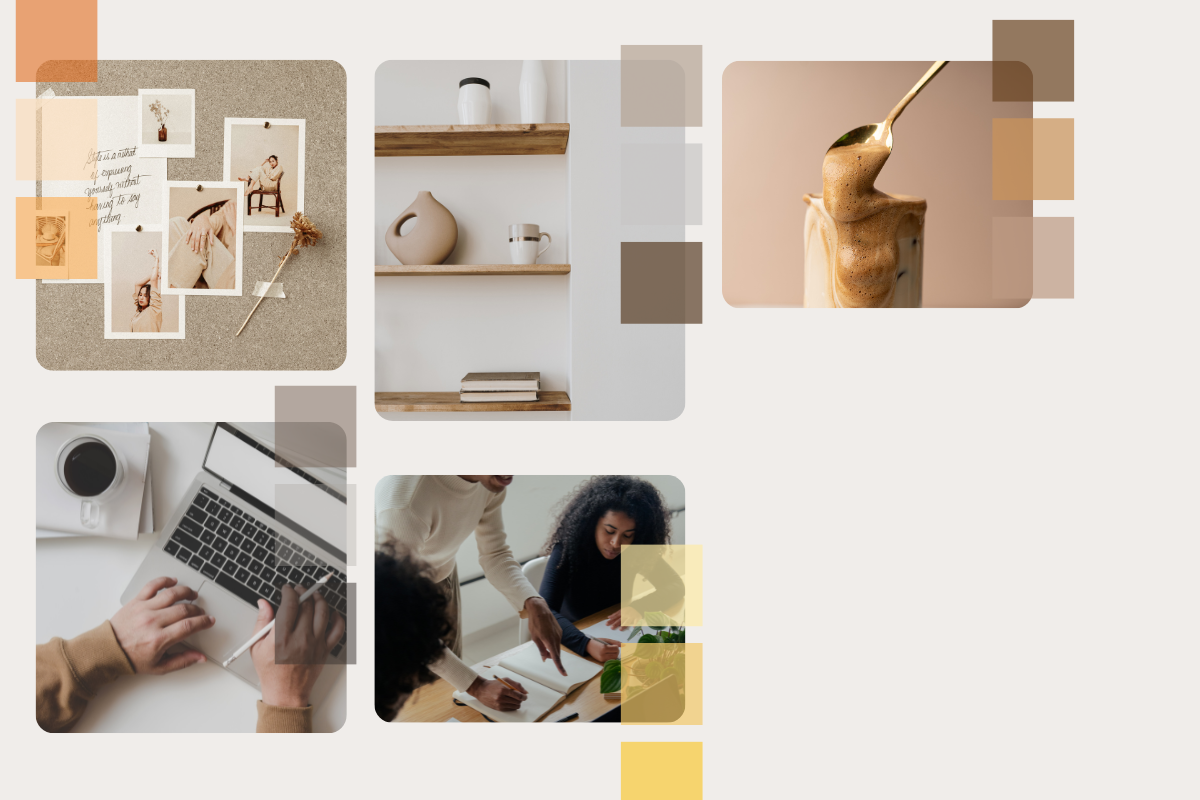How the F*ck Do I…Create a Brand Identity?
Branding is an entire identity. It’s how you tell your audience what you’re all about!

LUX WMN
17 November 2023
What’s a brand identity?
Branding is more than just a logo, more than a color palette— it is an entire identity. It’s how you tell your audience what you’re all about! Branding pro, Marty Neumeier, defines a brand identity as “the outward expression of a brand, including its trademark, name, communications, and visual appearance.”
Creating a brand identity from start to finish can seem like a daunting task, but there are small steps you can take to get you there!
Why is it important?
- Makes your brand recognizable
- Helps you stand out from competitors
What is it made up of?
Important components
- Design
- Logo
- Colors
- Typeface (usually 2)
- illustration/photography style. Textures, Treatment of type and images (is there a lot of whitespace? Do photos bleed off the page?), Iconography, data visualization
- Copy
- Brand voice and tone
- Content messaging
- Look and feel/aesthetic
- Brand mission, vision, and values
How do I do it?
- Determine who you brand is: What message do you want to send? What’s your mission?
- Before jumping into designing a logo or choosing colors, you need to sit down and define who you are as a brand. What message do you want to send consumers? What’s your mission? Answering these questions will inform you on how you should present yourself aesthetically.
- Try and consolidate your brand down to 3-5 core values and a mission statement. These should be the essence of your company and will be your guide to look back at when making any brand decisions in the future.
- Audit competition
- Your brand is great! But let’s be honest, there are lots of others doing the same thing. So how do you stand out? This is where a competition audit comes in. Look into similar companies and write down each’s strengths and weaknesses. What makes you stand out from your competitors? Play to your strengths
- Ideate Visual Identity
- Mood board: Creating a mood board can be a great way to start getting a feel of your brand. Don’t put too much pressure on yourself in this step, just start collecting photos, illustrations, and typefaces that display the essence you want your brand to have. You can do this physically with cutout photos and type, or digitally by copy/pasting photos you find online, or just by making a board on pinterest.
- It’s a good idea to make a few different mood boards with different vibes, and when you’ve finished them, look at them all at once and decide which aligns with your brand (think back to your core values you wrote out and mission statement!).
- You can pull colors and typefaces from your mood board to be apart of your brand.
- Logo
- I know as a do-it-yourself entrepreneur you won’t like to hear this, but if you’re not a designer by trade, hire one to design your logo. Your logo is at the center of your brand’s identity and will be put on everything you create, so you will want it to be high-quality.
- Color Palette
- Choose colors
- 1 main color
- 1-3 accent colors
- Color for background (doesn’t have to be white) and type (doesn’t have to be black)
- Consider color psychology
- Red: passion, love, blood, power, anger
- Orange: warmth
- Yellow: happy, bright, sunshine, light, wealth
- Green: optimism, life, growth, nature
- Teal: calm, peace
- Blue: cool, calm, trust, loyalty, conservative
- Pink: feminine, youthful
- Purple: cool, vibrant
- Choose colors
- Typography
- 2-3 typefaces
- Anything more than 3 will hurt the consistency of your brand
- Now it’s time to choose your brand’s typefaces. You’ll want to choose 2-3 typefaces:
- Headings: can (but does not have to!) be more decorative since it will be used for short phrases and will be used at a larger size.
- Body copy: choose a font that is easy to read as this one will be used for longer text
- A third typeface will be used more for special circumstances, such as if you hold a formal event and want a calligraphy font or if your brand exists in an online space and you need a typeface supported on the internet.
- 2-3 typefaces
- Additional Elements
- Photography
- Illustration style
- Icons
- Build Brand Guidelines
- Consolidating all the work you’ve done on creating your brand!


